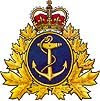
In late August of 1976, HMCS Fraser was deployed to the area of the Grand Banks, 250 nautical miles off the Southeast coast of Newfoundland. This was to be my introduction to this fabled area of the ocean. It seemed that the Russians had lost a large, long-range reconnaissance aircraft there. In fact, a Tupolev TU-95RT (NATO Codename 'Bear-D') aircraft.
http://avionique.free.fr/IMG/jpg/TU-95-2.jpg
They had dispatched a few ships to the area, in a bid to retrieve whatever wreckage they could. As this was pretty much at the height of the Cold War, Russia routinely sent long range patrols to probe the outer defenses of North America. Long before C.W.McCall's "Convoy" ever hit the airwaves, sailors were using the term: "a Bear in the air...". Bears were enormous aircraft with a prodigious range. They were considered even more exotic due to their four contra-rotating turbo-prop engines. Many nations have dabbled in this technology, but only the Russians had stuck with and perfected it's use in military aircraft. They employed the same type of technology on their military helicopters, such as the KA-25 'Hormone' (ASW/ASUW), the KA-27 "Helix' (ASW/ASUW), the KA-50 'Hokum' attack helicopter, or the KA-52 'Maks' attack helicopter:
http://www.military-today.com/helicopters/kamov_ka25_hormone.jpg
http://www.military-today.com/helicopters/kamov_ka27_helix.jpg
http://www.military-today.com/helicopters/kamov_ka50_hokum_l1.jpg
http://www.flugzeuginfo.net/acimages/ka52_nesvetaev.jpg
On September the 6th, 1976, Viktor Ivanovich Belenko defected to Japan in his MiG-25 Foxbat jet fighter, one of the most well-known defections from the Soviet block.
http://www.aerodream-fr.net/modules/Encyclopedie/photos/mig25/mig-25p-belenko-grand.jpg
But in that same year, there was another defection so embarrassing to the Soviets that its particulars remained a secret for more than twenty-five years.
Newspiece as it appeared in the British magazine Aviation International of June 1987:
"In August 1976, two TU-95 Bear D maritime surveillance aircraft of the Soviet Naval Aviation took off from an airbase in the Kola Peninsula to participate in the Okean 76 multi-ocean exercises of the Soviet Navy, rounded the North Cape, crossed the Norwegian Sea, overflew the Soviet naval forces exercising in the Iceland-Faeroes Gap and proceeded on Southward to Cuba. This flight of more than 10,000 km took the airplanes to the airbase of the Fuerza Aérea Revolucionaria Cubana (Cuban Revolutionary Air Force) at San Antonio de los Baños, Havana, from where they could fly ELINT missions along the entire American eastern seaboard."
All media accounts of Soviet TU-95 flights participating in the Okean ’76 naval maneuvers mention only two planes. Whenever they were confronted in private, however, the Soviets acknowledged that in reality, three planes took off from Russia, with the third aircraft crashing at sea, killing everyone aboard. Since it sank in deep waters near Newfoundland, Canada, no one attempted to salvage the wreck.
There has been a 'fictional' book written titled "Bear: Flight to Liberty". In this tale, author Miguel Vargas-Caba describes a scenario wherein the crew of this 3rd Bear-D aircraft would presumably have defected to Canada.
http://www.bearflighttoliberty.com/The%20Flight%20ENG.htm
I've only recently found out about this, some thirty years plus after the incident. It certainly sheds a different light on that particular deployment. I remember wondering about the fate of the crew, as we sat there in the silent hours, tracking and reporting the vessels as they searched the ocean floor for any signs of wreckage. It made me shudder...
http://avionique.free.fr/IMG/jpg/TU-95-2.jpg
They had dispatched a few ships to the area, in a bid to retrieve whatever wreckage they could. As this was pretty much at the height of the Cold War, Russia routinely sent long range patrols to probe the outer defenses of North America. Long before C.W.McCall's "Convoy" ever hit the airwaves, sailors were using the term: "a Bear in the air...". Bears were enormous aircraft with a prodigious range. They were considered even more exotic due to their four contra-rotating turbo-prop engines. Many nations have dabbled in this technology, but only the Russians had stuck with and perfected it's use in military aircraft. They employed the same type of technology on their military helicopters, such as the KA-25 'Hormone' (ASW/ASUW), the KA-27 "Helix' (ASW/ASUW), the KA-50 'Hokum' attack helicopter, or the KA-52 'Maks' attack helicopter:
http://www.military-today.com/helicopters/kamov_ka25_hormone.jpg
http://www.military-today.com/helicopters/kamov_ka27_helix.jpg
http://www.military-today.com/helicopters/kamov_ka50_hokum_l1.jpg
http://www.flugzeuginfo.net/acimages/ka52_nesvetaev.jpg
On September the 6th, 1976, Viktor Ivanovich Belenko defected to Japan in his MiG-25 Foxbat jet fighter, one of the most well-known defections from the Soviet block.
http://www.aerodream-fr.net/modules/Encyclopedie/photos/mig25/mig-25p-belenko-grand.jpg
But in that same year, there was another defection so embarrassing to the Soviets that its particulars remained a secret for more than twenty-five years.
Newspiece as it appeared in the British magazine Aviation International of June 1987:
"In August 1976, two TU-95 Bear D maritime surveillance aircraft of the Soviet Naval Aviation took off from an airbase in the Kola Peninsula to participate in the Okean 76 multi-ocean exercises of the Soviet Navy, rounded the North Cape, crossed the Norwegian Sea, overflew the Soviet naval forces exercising in the Iceland-Faeroes Gap and proceeded on Southward to Cuba. This flight of more than 10,000 km took the airplanes to the airbase of the Fuerza Aérea Revolucionaria Cubana (Cuban Revolutionary Air Force) at San Antonio de los Baños, Havana, from where they could fly ELINT missions along the entire American eastern seaboard."
All media accounts of Soviet TU-95 flights participating in the Okean ’76 naval maneuvers mention only two planes. Whenever they were confronted in private, however, the Soviets acknowledged that in reality, three planes took off from Russia, with the third aircraft crashing at sea, killing everyone aboard. Since it sank in deep waters near Newfoundland, Canada, no one attempted to salvage the wreck.
There has been a 'fictional' book written titled "Bear: Flight to Liberty". In this tale, author Miguel Vargas-Caba describes a scenario wherein the crew of this 3rd Bear-D aircraft would presumably have defected to Canada.
http://www.bearflighttoliberty.com/The%20Flight%20ENG.htm
I've only recently found out about this, some thirty years plus after the incident. It certainly sheds a different light on that particular deployment. I remember wondering about the fate of the crew, as we sat there in the silent hours, tracking and reporting the vessels as they searched the ocean floor for any signs of wreckage. It made me shudder...
















1 comment:
For the last 33 years I have been searching for Canadians who were at the spot where Capt. Krasnoselskih's TU-95RTs (Bear D) crashed, near Newfoundland. Please write to me about this incident. I would like to hear more about it from the Canadian side. Thank you!
Mikhail Kurchatov, New York, USA.
kurchatov324@hotmail.com
Post a Comment